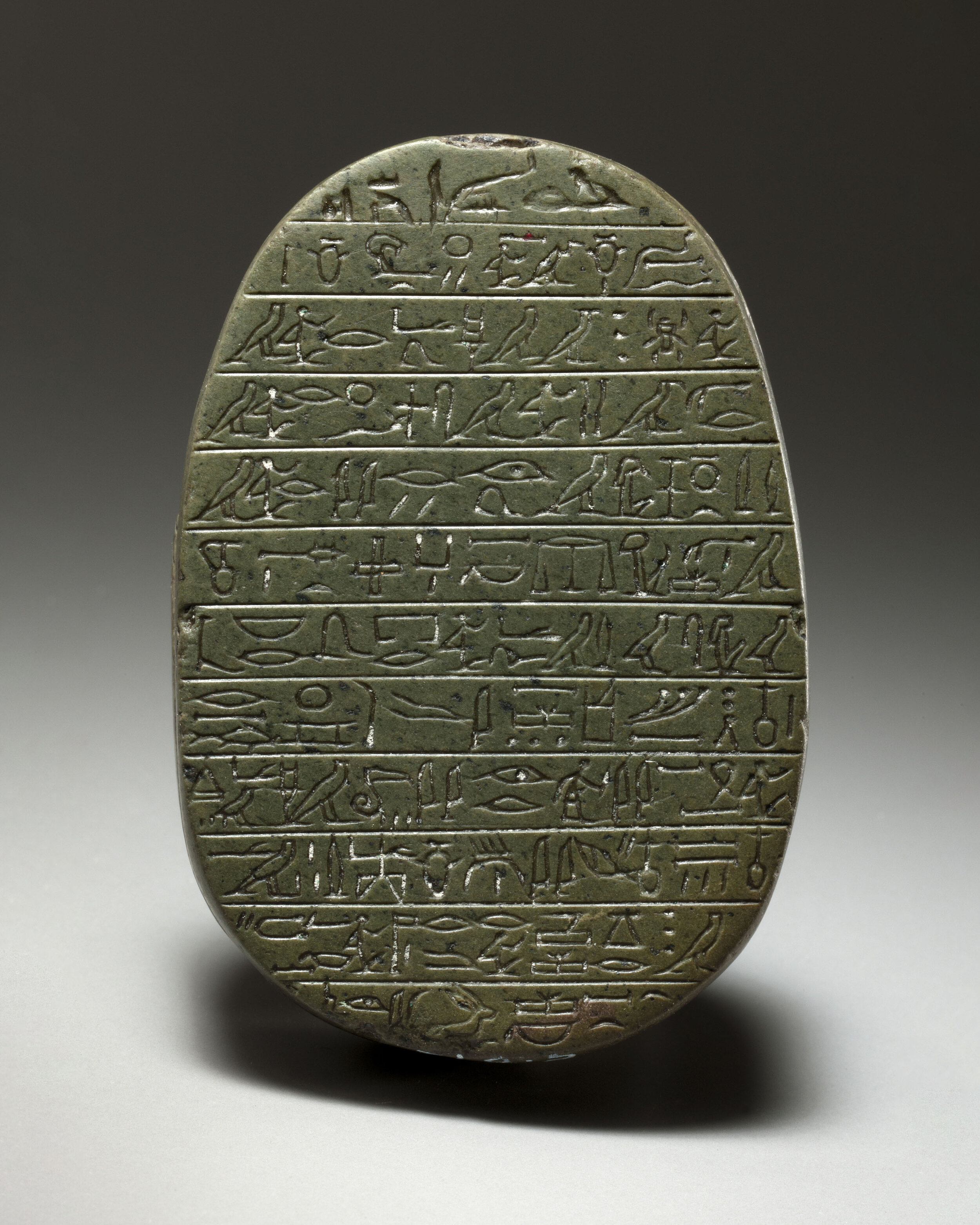Ancient Egyptian Bronze Goddess Bastet



Ancient Egyptian Bronze Goddess Bastet
Egyptian, Late Period, ca. 712 – 332 B.C.
Bronze
H: 12.6 cm
Serial: 19069
The goddess is represented standing in a strictly frontal position. She wears a long pleated tunic with short sleeves, and she holds an aegis formed by the lioness head surmounted by the solar disk in her left hand; there is a sistrum, of which only a fragment of the handle is preserved, in her right hand. A statuette of the god Nefertem represented in the standard iconography is leaning against her shoulder and supported by her left forearm.
The image of Bastet gained a great popularity, especially since the Third Intermediate Period following the evolution of the religious feeling of the Egyptians which introduced the multiplication of the protecting deities such as, for example, Bes, Ptah-Pataikos, and the others. The increasing number of the images of Bastet made of faience, stone or metal covered the demand of the ex-votos.
Bastet was a clement and mild form of the dangerous goddess Sekhmet, she appeared respectfully in the aspect of a she-cat or a lioness because her dreadful character is always accompanies her. Master of all illnesses, she is the patron of the priests-doctors of Sekhmet and the guard of the family home, pregnant women and children. Venerated all around Egypt, her principal sanctuary was at Bubastis (Tell Basta), a town that became capital during the XXIInd Dynasty, which helped to raise the prestige of the goddess. Once in the year, her temple attracted a big crowd of pilgrims from all social levels for the memorable festivities described by Herodotus, where the wine was abundant. For this occasion, the cats which have passed away were brought to the temple and mummified. According to some scholars, the shape of the pointed (she-cat) or rounded (lioness) ears indicated if the amulet represented Bastet or the corresponding Sekhmet.
The presence of Nefertem, which first looks unusual as the attribute of Bastet, could be explained by the close religious and iconographic relationship that united Sekhmet and Bastet. Nefertem was divinity of the Memphis origin, son of Sekhmet and Ptah with whom he forms a popular triad since the New Kingdom. He is closely related to the lotus flower, which was largely used in the Egyptian industry of perfumes: he was venerated as perfume patron and also associated with the solar deity Re because the lotus flower opens each morning at the moment of sunrise.
CONDITION
Complete and in a good condition, the feet and sistrum are missing, traces of the green oxides on surface over the dark brown patina, solid cast.
PROVENANCE
Ex- Fitz William Museum, Cambridge; Ex- Pierre Vérité collection, Paris, France, 1920’s and thence by descent to the family collection.
PUBLISHED AND EXHIBITED
La Méditerranée, Cerceau de l'Europe, Maison des Arts et Loisirs de Montbéliard, Atelier des Halles, France, November 6 to December 15, 1971, number 28.
BIBLIOGRAPHY
GUICHARD H., ed., Des animaux et des pharaons. Le règne animal dans l’Égypte ancienne, Lens, 2014, pp. 294 ff.
LETELLIER B et al., Les animaux dans l’Egypte ancienne, Lyon, 1977, pp. 43 ff.
PAGE-GASSER M., WIESE A.B., Egypte. Moments d’éternité. Art égyptien dans les collection privées, Suisse, Mainz/Rhine, 1997, pp. 273-274, n. 184.
SCOTT N. E., The Cat of Bastet, in Bulletin of the Metropolitan Museum of Art 17, 2, 1958, p. 3.
WILKINSON R. H., The Complete Gods and Goddesses of Ancient Egypt, London, 2003, pp. 133-135, 177-178, 181-182.







